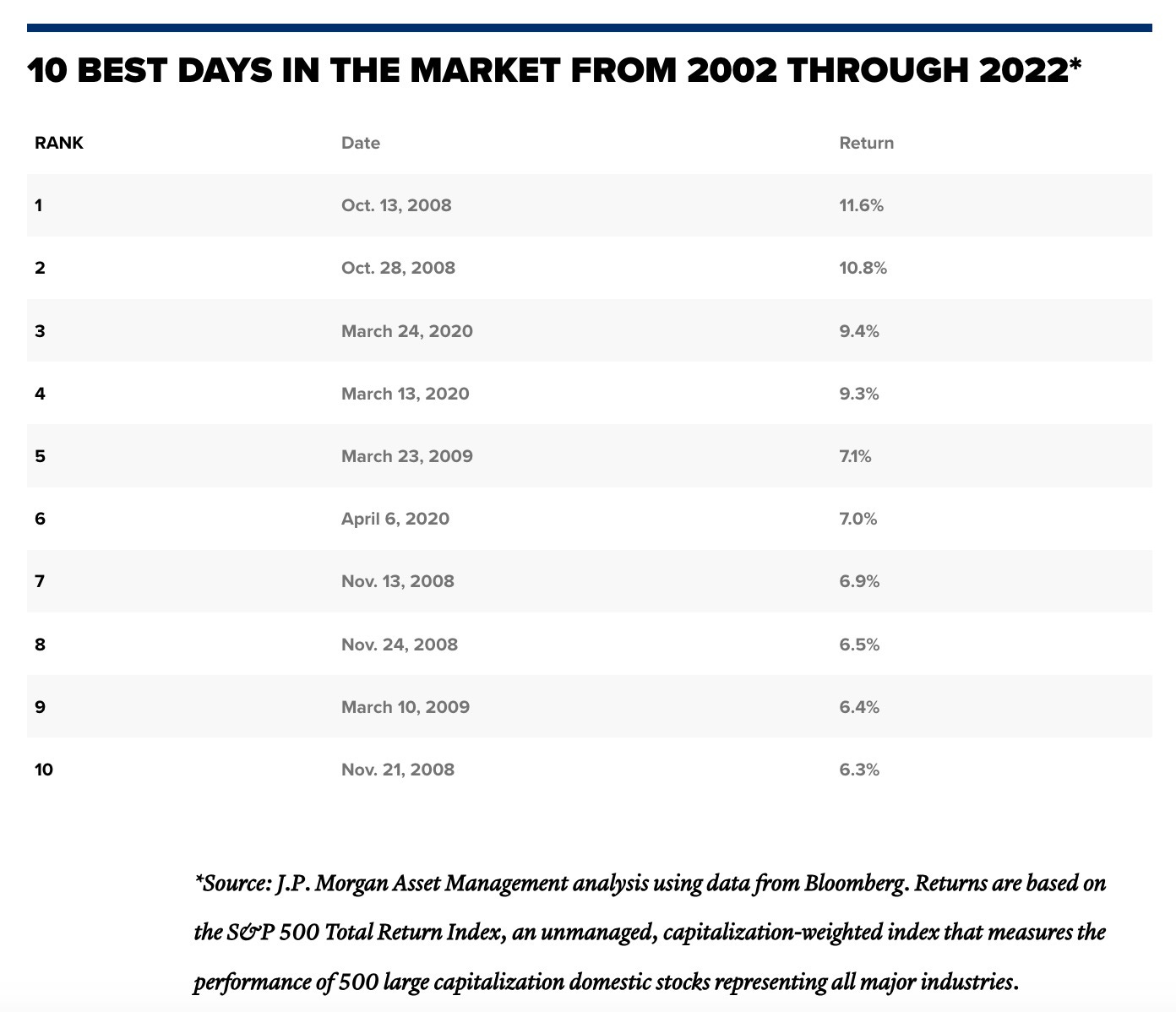Practical Money: Pitfalls of trying to time the market, VOO update
Time in the market always trumps timing the market.

Introduction
You’ve probably heard the saying “it’s about time in the market and not timing the market.” Well, maybe you haven’t unless you’re a finance dork like me. But regardless, it’s a saying and one I’ve abided by for decades. We’ll get into it.
A quick reminder that this is not financial advice, just myself sharing my investments, stocks, index fund strategies, what I'm buying, and where I plan to take those investments. Everyone’s financial goals are different. No financial decisions should be made solely on this newsletter, which is for informational and entertainment purposes only and is not intended to be a substitute for advice from a professional financial advisor or qualified expert.
Please subscribe and help spread the word:
The Market Rebound, Missing The Best Days
The market has had a great month. With November coming to an end, the S&P 500 is up 8.9% while the Nasdaq rallied 10.7%. Last year the greatest investor of our time, Warren Buffet, said, "We haven't the faintest idea what the stock market is gonna do when it opens on Monday — we never have.
"I don't think we've ever made a decision where either one of us has either said or been thinking: 'We should buy or sell based on what the market is going to do… Or, for that matter, what the economy is going to do."
The one thing I’ve always stuck with that has always worked, stay in the market and keep investing. One thing that has worked for me has been to reverse my thinking to make money. A major part of that was convincing myself to keep adding money when the market was doing terrible. The kneejerk reaction when the market is tanking is to sell, but you end up doing the proverbial “buy high, sell low” cliche. But if you keep buying, it pays dividends. If you sold when the market was going down, there’s a good chance you missed some big days. And that can cost you greatly. This chart from Fidelity shows just that. If you started investing in the S&P 500 with $10,000 in 1980, you’d have over $1 million. But if you pulled your money out and missed the best 5 days, you’d have ended up with around $671K. If you missed the best 50 days, you’d be down to around $76K.
Here is a look at the 10 best market days from 2002 through 2022 and how much you could have missed out on by sitting those out.
VOO Update
I revealed my entire stock portfolio in August (you can read that issue here). I noted that whenever the market is down more than 2% in a week, I buy more. And I’m still catching the market when it’s on an upswing because I dollar-cost-average and I’m automatically buying into the market several times a week between all of our accounts.
I revealed my ETF portfolio in September, which you can check out here. For a real-world example for this newsletter, in the summer of 2022, I bought the Vanguard S&P 500 ETF (VOO) which tracks the S&P 500 and have been automatically investing into it every week. You can read the details on that here. For an update with November ending, it has returned nearly 11% since my first purchase. It has also returned almost $550 in dividends. You can see the performance so far below:
Conclusion
One of the things I really try to teach my children is to not worry about the ups-and-downs of the market, just stay consistent and keep investing. Please let me know your thoughts on this newsletter and submit any feedback. You can follow me on Twitter at @TheRajGiri or on Threads at @RealRajGiri . If you haven’t already, please subscribe below:





